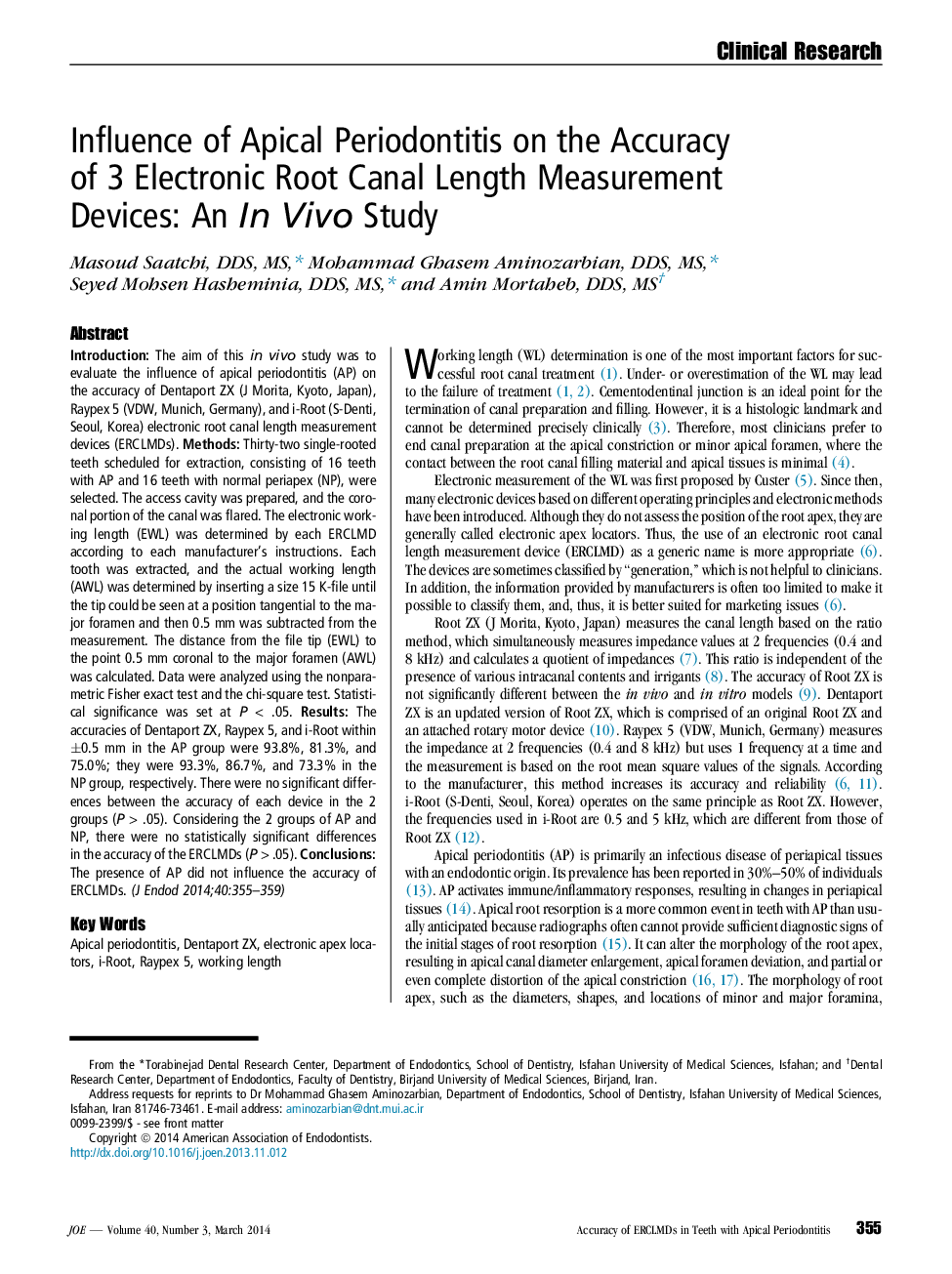| Article ID | Journal | Published Year | Pages | File Type |
|---|---|---|---|---|
| 3148565 | Journal of Endodontics | 2014 | 5 Pages |
IntroductionThe aim of this in vivo study was to evaluate the influence of apical periodontitis (AP) on the accuracy of Dentaport ZX (J Morita, Kyoto, Japan), Raypex 5 (VDW, Munich, Germany), and i-Root (S-Denti, Seoul, Korea) electronic root canal length measurement devices (ERCLMDs).MethodsThirty-two single-rooted teeth scheduled for extraction, consisting of 16 teeth with AP and 16 teeth with normal periapex (NP), were selected. The access cavity was prepared, and the coronal portion of the canal was flared. The electronic working length (EWL) was determined by each ERCLMD according to each manufacturer's instructions. Each tooth was extracted, and the actual working length (AWL) was determined by inserting a size 15 K-file until the tip could be seen at a position tangential to the major foramen and then 0.5 mm was subtracted from the measurement. The distance from the file tip (EWL) to the point 0.5 mm coronal to the major foramen (AWL) was calculated. Data were analyzed using the nonparametric Fisher exact test and the chi-square test. Statistical significance was set at P < .05.ResultsThe accuracies of Dentaport ZX, Raypex 5, and i-Root within ±0.5 mm in the AP group were 93.8%, 81.3%, and 75.0%; they were 93.3%, 86.7%, and 73.3% in the NP group, respectively. There were no significant differences between the accuracy of each device in the 2 groups (P > .05). Considering the 2 groups of AP and NP, there were no statistically significant differences in the accuracy of the ERCLMDs (P > .05).ConclusionsThe presence of AP did not influence the accuracy of ERCLMDs.
